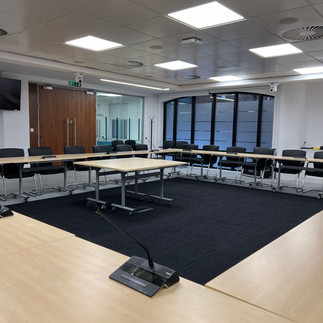Updated: Aug 26
Dear ADENA Partners, our new case study this month highlights the integration between AREC speaker tracking solutions and Televic discussion systems. In an effort to create a modern and user-friendly Teams room, the end-user relied on the expertise of our UK distributor Tukans / CUK Group and system integrator Xuper.

The end-user company is one of the largest transport partnerships in the northern UK. Its objectives include uniting local authorities and other significant stakeholders in the region, as well as enhancing the coordination and implementation of regional transport services. Achieving these objectives requires an organisation to have a robust and functional conferencing infrastructure, and so the company invested in a new generation Teams Room that would make communication effortless. Building a solution using AREC, Televic, Audac, and other brands, Tukans provided the company with just that kind of room.
Mixing all the cameras and coordinating their PTZ presets with activated Televic Confidea microphones is the DS-4CU, our speaker tracking station. This station can work with up to 4 video sources simultaneously and display custom layouts, backgrounds, and overlays for up to 99 different participants. The station automatically shows the right cameras and moves them to designated positions as soon as a speaker activates. Its integration with Televic Confidea makes the setup process and follow-up configuration elementary - users simply need to write in the number of the graphical element they wish to use, which video sources and which presets to trigger on them. Moreover, the station ensures that speakers are always in focus by providing different tracking modes, including multiple speaker, override, and FIFO modes. The combined image from the DS-4CU and an audio output from the Televic microphones through Confidea, is connected to an Audac amplifier, which is then sent to an HDMI-USB converter to be used as a video and audio source in Teams. Audio from the amplifier is also used for the room speakers, for near and far end audio reinforcement. Lastly, AREC KL-3T Media Station with a built-in touchscreen was also used to enable professional recording and streaming of the meetings, and also remote user control of the meeting recordings utilising the station’s web interface.
With this solution in place, the company’s employees only need to press the push-to-talk button on microphones to be immediately shown on the screen and deliver their talking points. We demonstrated the simplicity of this approach in our AREC-Televic webinar, which you can watch here if you missed it.
Are you looking for a reliable and easy-to-set-up conferencing solution? Contact us at www.a-dena.com and we will be happy to discuss your requirements.
.png)























